
Notes from BELTA 2022 Plenary Workshop Discussion
- Subject:
- Educational Technology
- Language Education (ESL)
- Languages
- Material Type:
- Lecture
- Author:
- Wendy Ashby
- Date Added:
- 11/06/2022

Notes from BELTA 2022 Plenary Workshop Discussion

Students will be working on identifying pluralizations and deciding which of the three pluralization sounds are used for the words on the worksheet after watching the video.
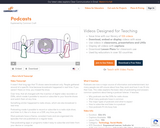
A short introduction to Podcasting and how it's different from broadcasting.
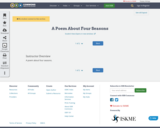
A poem about four seasons.
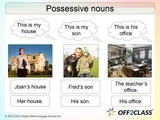
Our new ESL Lesson Plan teaches about the use of possessive nouns. A robust lesson plan with clear descriptions, examples and practice opportunities, this is an engaging lesson that will help your students understand the use of for for things and places and the use of apostrophes for singular and plural nouns. The lesson is designed for elementary level learners.If you want additional lesson plans and support, including teachers’ notes, be sure to register for a free Off2Class account.
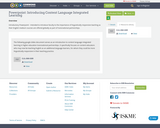
Introductory Powerpoint - Intended to introduce faculty to the importance of linguistically responsive teaching as their English medium courses are offered globally as part of transnational partnerships.
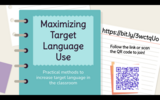
If you teach a second language and are struggling to use the target language as much as possible with your students, this short presentation talks about some of the obstacles we face in the classroom and can give you some tips and tricks for maximizing your TL!

This book uses authentic freshman-level reading materials to teach important reading skills and prepare students, including English Language Learners, for university. In each chapter, you’ll find passages from freshman textbooks, explicit reading skill instruction, reading comprehension questions, vocabulary activities, and discussion topics. Together the materials in this book will help students better understand typical readings from their freshman year of college by giving them the tools to succeed.

This activity will help learners identify prepositions used in sentences.

Teaching Prepositions of Place – in, at, onThis lesson plan is part of an eight-part series and it discusses how to use prepositions with place. It starts with an explanation and moves into communicative activities that give students plenty of time to practice. You’ll also cover how to use prepositions when discussing vehicles (as noted in the example above). These lesson plans are guaranteed to clear up any questions students have regarding how to use these tricky words! With both, it’s important to note that using in,at and on with time and place are totally different,students should treat them as new prepositions with each lesson.If you want additional lesson plans and support, including teachers’ notes, be sure to register for a free Off2Class account.
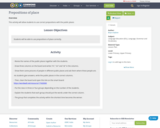
This activity will allow students to use correct prepositions with the public places

This activity will allow students to use correct prepositions with the public places
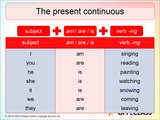
This lesson plan on the present continuous tense should be used to teach elementary-level students a basic understanding of how to use verbs in the present simple form. This lesson will require students to speak, read, listen and spell in English but not at a particularly advanced level. In any case, it is suitable for group or individual classes. It is a very fun lesson that can be used for concept checking and test review.If you want additional lesson plans and support, including teachers’ notes, be sure to register for a free Off2Class account.
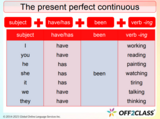
This free present perfect continuous lesson plan helps students use the present perfect continuous in positive, negative, and question form. This is a robust intermediate lesson plan with clear descriptions, examples, and practice opportunities.If you enjoyed this ESL lesson plan download, there are 150+ more free lessons available with a free Off2Class account!
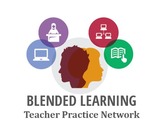
This online learning module will explore the following learning targets: 1: Understand the foundations of problem-based learning2: Learn the phases of a problem-based learning module3: Understand the shifts of teachers and students in a problem-based learning classroom
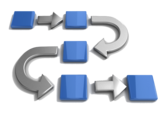
Mark A. Tambone, Passaic County Community CollegeI created this process chart to aid students through the entire writing and editing process. Additionally, this chart helps students remain mindful of proper time management and scheduling which is needed in order to utilize our tutoring services. This work is licensed under a Creative Commons Attribution-NonCommercial 4.0 International License
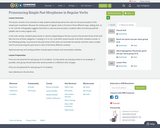
This lesson consists of six activities to help students deductively derive the rules for the pronunciation of the simple past morpheme. Because the simple past of regular verbs is formed in three different ways, adding /ed/, /t/, or /d/, and the orthography suggests that there is only one pronunciation, students often erroneously add the syllable /ed/ to every regular verb.In the main activity, students place words in columns dependong on the last sound in the present tense of the verb falls into one of three categories 1) ending in /t/ or /d/, 2) all other voiced sounds 3) all other voiceless sounds. In the following activity, Ss pronounce the past tense of the verbs out loud with the teacher and then write a simple rule for prounouncing the past tense in each of the three different contexts. Optional warmup and closing activities include speed contests and conversation activities.

This activity will allow students to memorize the names of public buildings quickly as they play a memory game.

This resource was created by Jeanine Figueroa, in collaboration with Dawn DeTurk, Hannah Blomstedt, and Julie Albrecht, as part of ESU2's Integrating the Arts project. This project is a four year initiative focused on integrating arts into the core curriculum through teacher education, practice, and coaching.

Overview of the ModulesIntroduction: Purpose and Function of Adjective ClausesWhy should I care about adjective clauses?What do adjective clauses do?What do adjective clauses look like?Adjective clauses vs. Noun clauses vs. Adverb clausesAuthentic English AnalysisAbout Relative PronounsCombining Two Sentences with an Adjective ClauseList of Relative PronounsRelative Pronouns: Subject or Object of the Adjective Clause?Identifying vs. Non-Identifying Adjective ClausesRelative Pronouns: Object of a PrepositionWho vs. Whom?Less Common Relative PronounsWhose vs. Who'sWhen, Where, and Why as Relative PronounsCommon Problems with Adjective Clauses